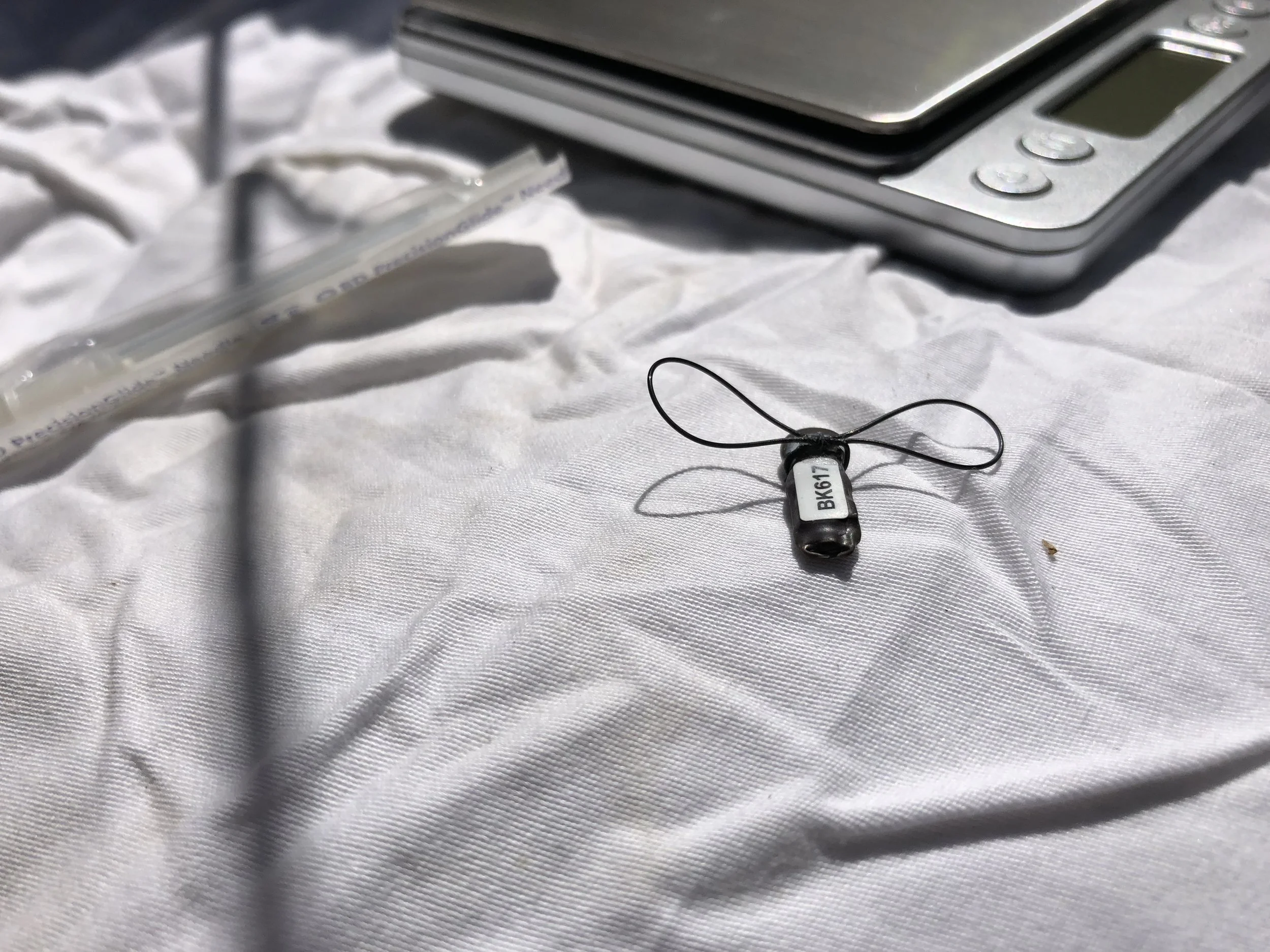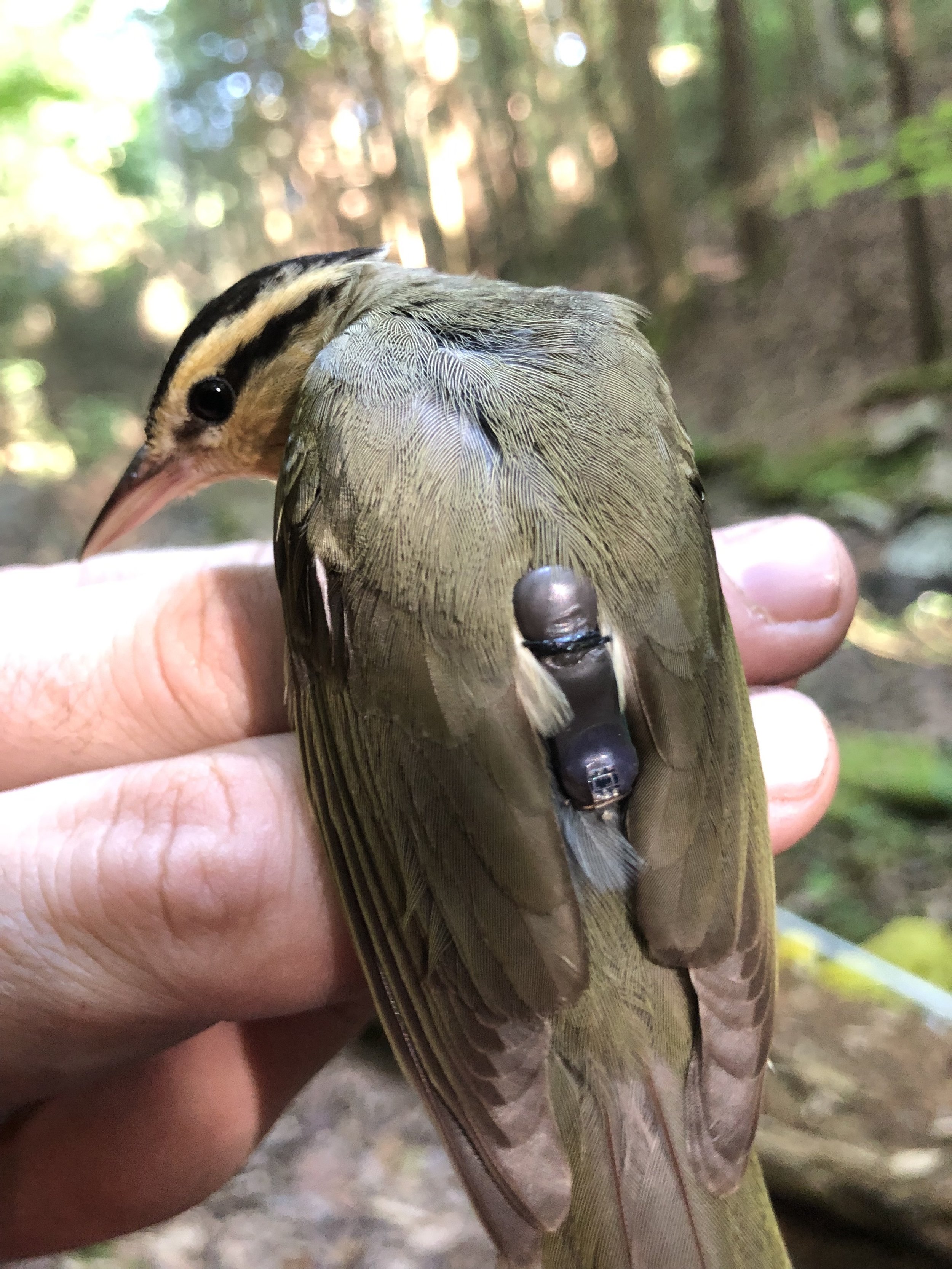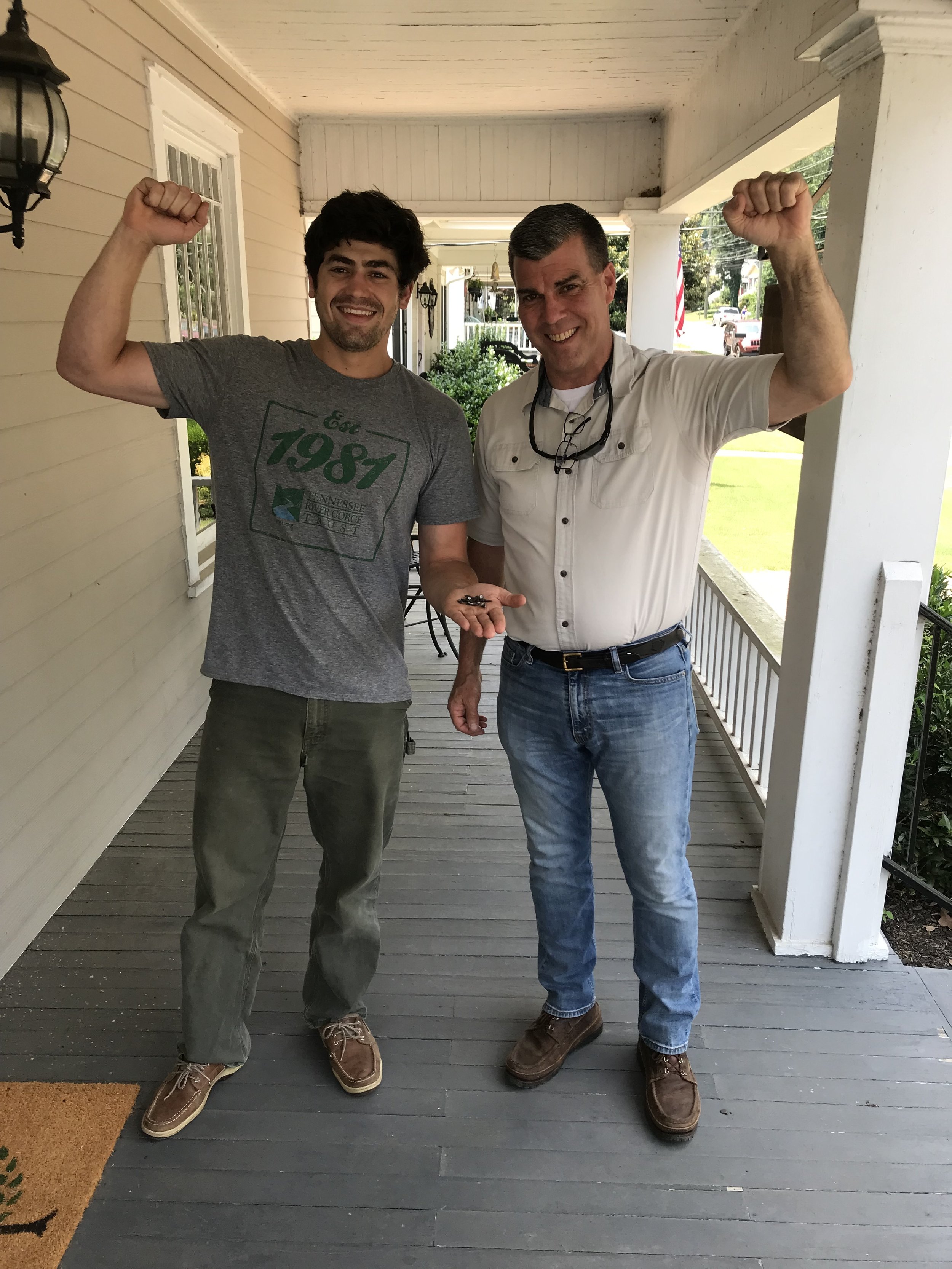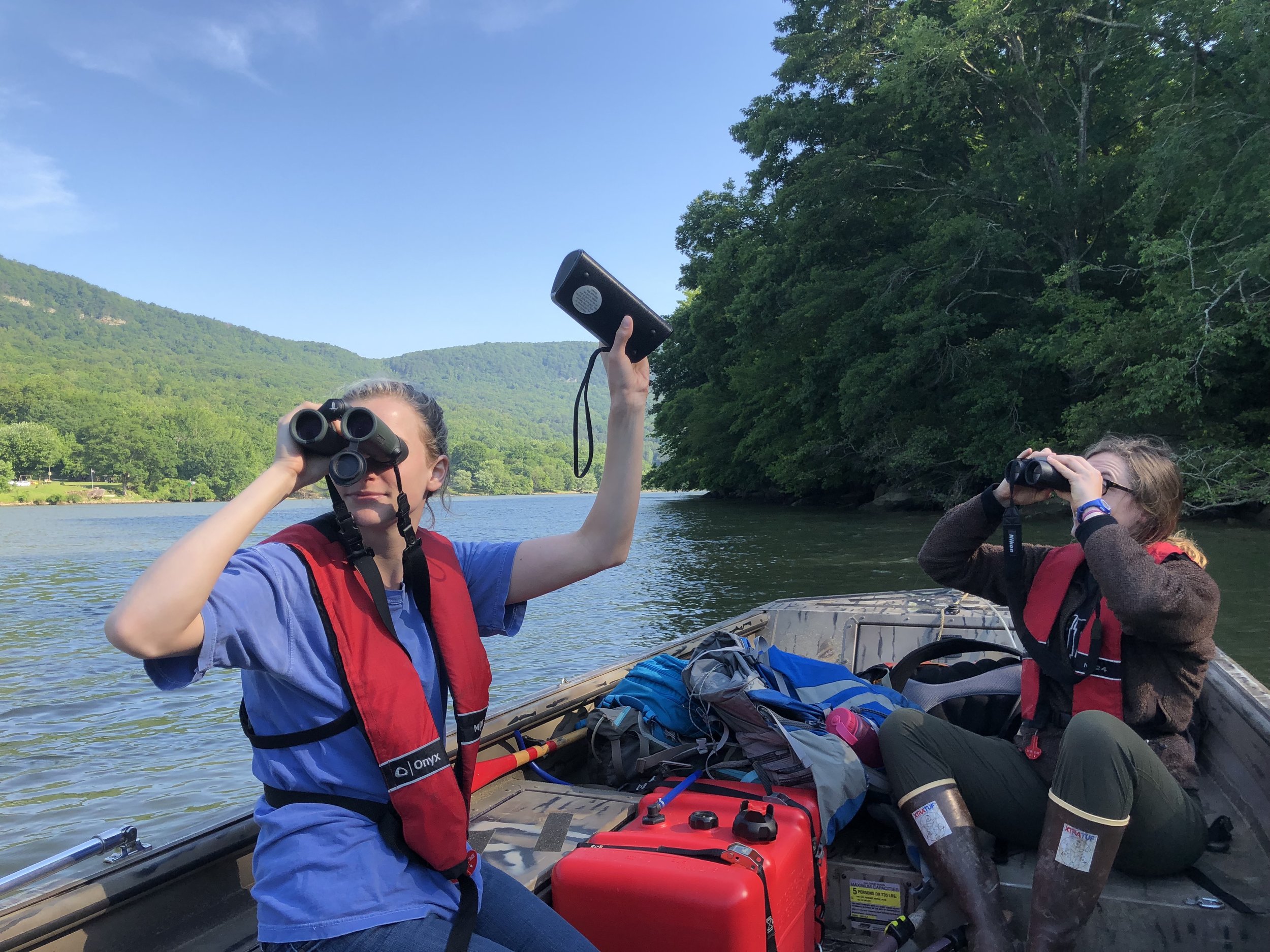39 Geolocators Back in Our Hands!
From left to right: A Worm-eating Warbler wearing a geolocator, the 12 geolocators retrieved by TRGT, and Executive Director, Rick Huffines, and Business and Access Director, Eliot Berz, triumphantly holding the 12 geolocators.
After much hard work, TRGT has recaptured 12 migratory birds wearing geolocator tracking devices! This makes a total of 39 returned geolocators for the overall study with our partners at the University of Toledo, University of Tennessee Chattanooga, and Harding University. At the TRGT study site, an additional 14 birds were recaptured as control birds wearing only leg bands, making a total of 29 recaptured control birds during the entire study. The research team is currently analyzing the data to uncover where the recaptured birds traveled to over the winter, so stay tuned for the exciting results!
These birds were equipped with geolocators in the summer of 2018, then flew 1,000+ miles to spend their winter in the tropics. The very same birds returned to the exact same territories in the Gorge to breed and raise young the following summer. This was the first time Worm-eating Warbler migration has been tracked and one of the initial studies for Louisiana Waterthrush migration.
TRGT discovered exciting results from a preliminary pilot study tracking Waterthrush migration back in 2016 and 2017. The geolocators revealed an astonishingly fast migration speed (an average of 7 days for a journey of over 1,000 miles)! We are eager to uncover what information these new 39 geolocators are holding.
From left to right: A 5+ year old Louisiana Waterthrush after returning to Suck Creek for his fourth season, Avian Technician Caryn Ross searching for birds, and a Waterthrush from Middle Creek on Signal Mountain.







